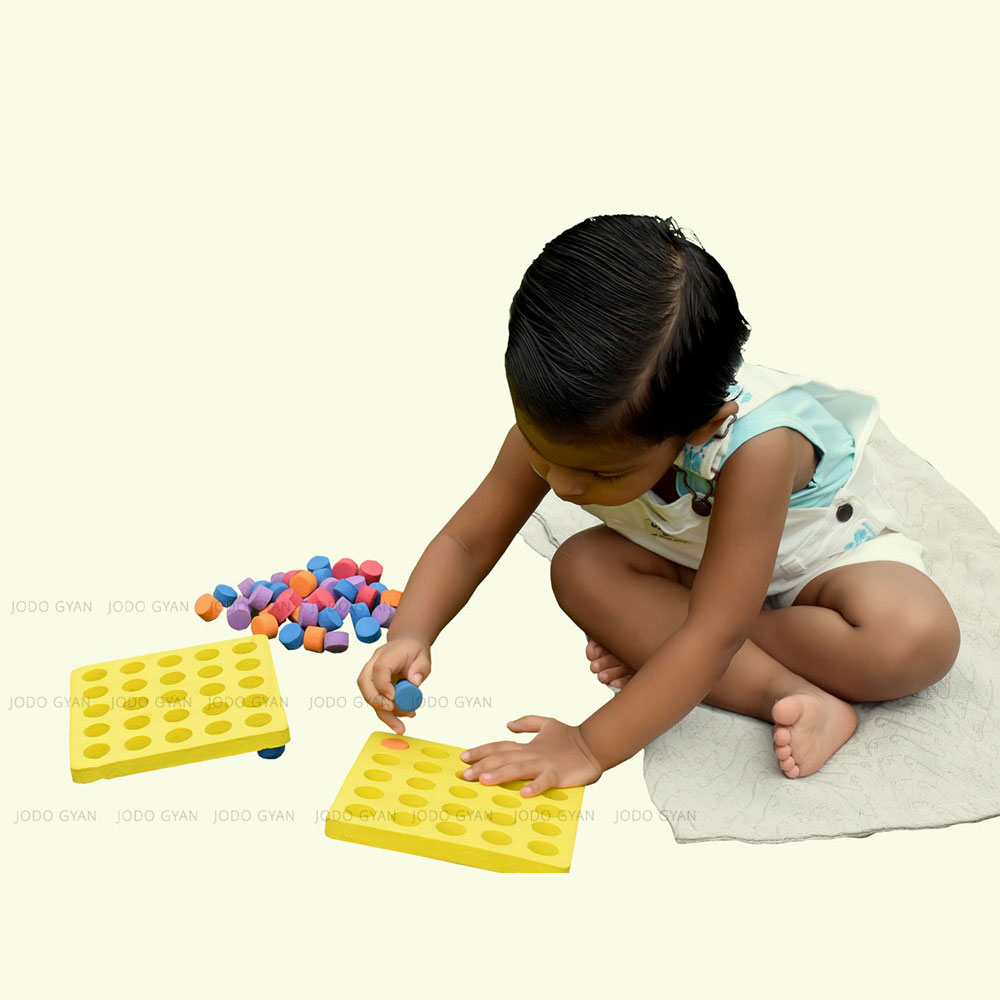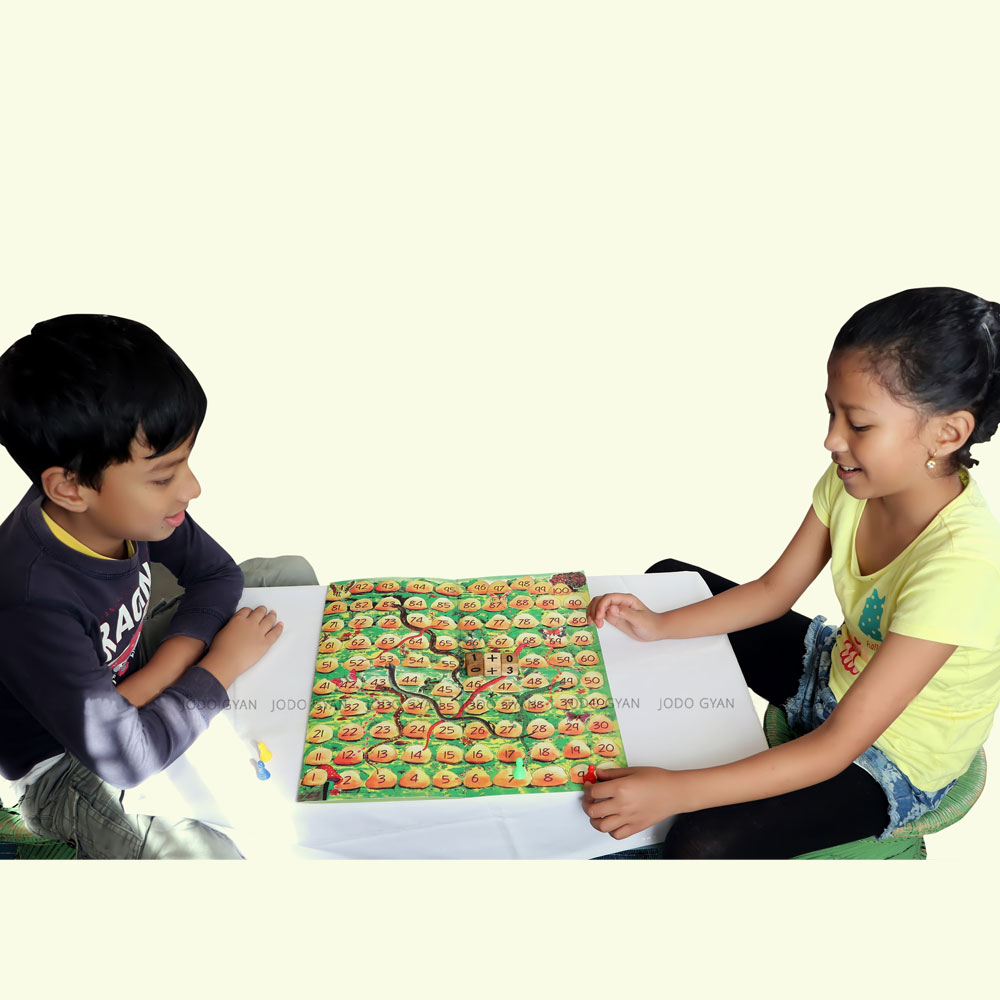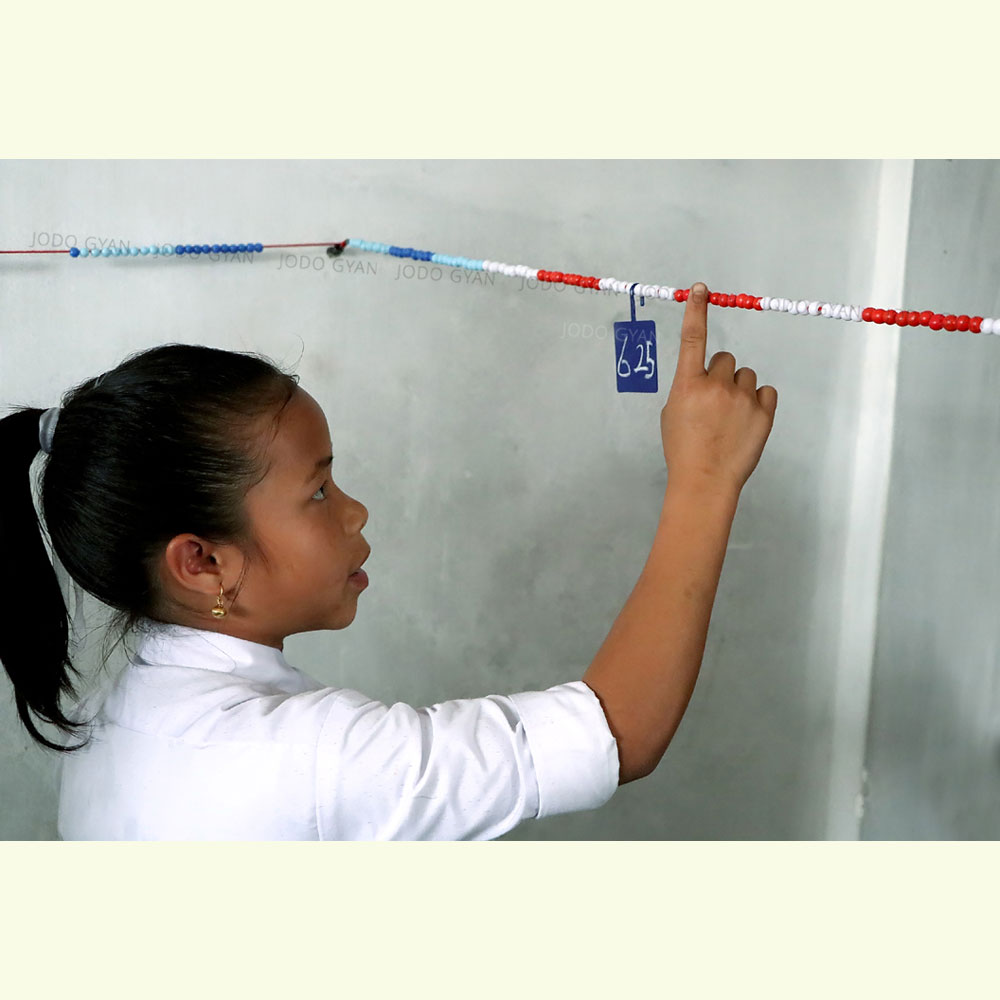The Learning tools (TLMs) have been categorised according to the ages for whom they are appropriate:
Mathematics – sharing the journey!
Primary Mathematics is deceptively simple. Yet it encompasses thousands of years of the journey of the human spirit – a journey of years of working on the earth, of measuring and building and transforming the world. The patterns discovered have evolved into mathematical objects that today confront the child in the classroom. New and powerful paths of reasoning have emerged that have made it possible for us to ‘go beyond the given’.
Children need to develop these new abstract skills. But how does one start?
Very often we make the mistake of starting from where we should be ending i.e. the abstract final notation and try to explain it. Instead, if we start from where children are, we would be more successful. To make the journey from concrete situations to the abstractions of mathematics, it is useful to have concrete mediators. These tools then further evolve with appropriate scaffolding by the teacher into ‘tools of the mind’.
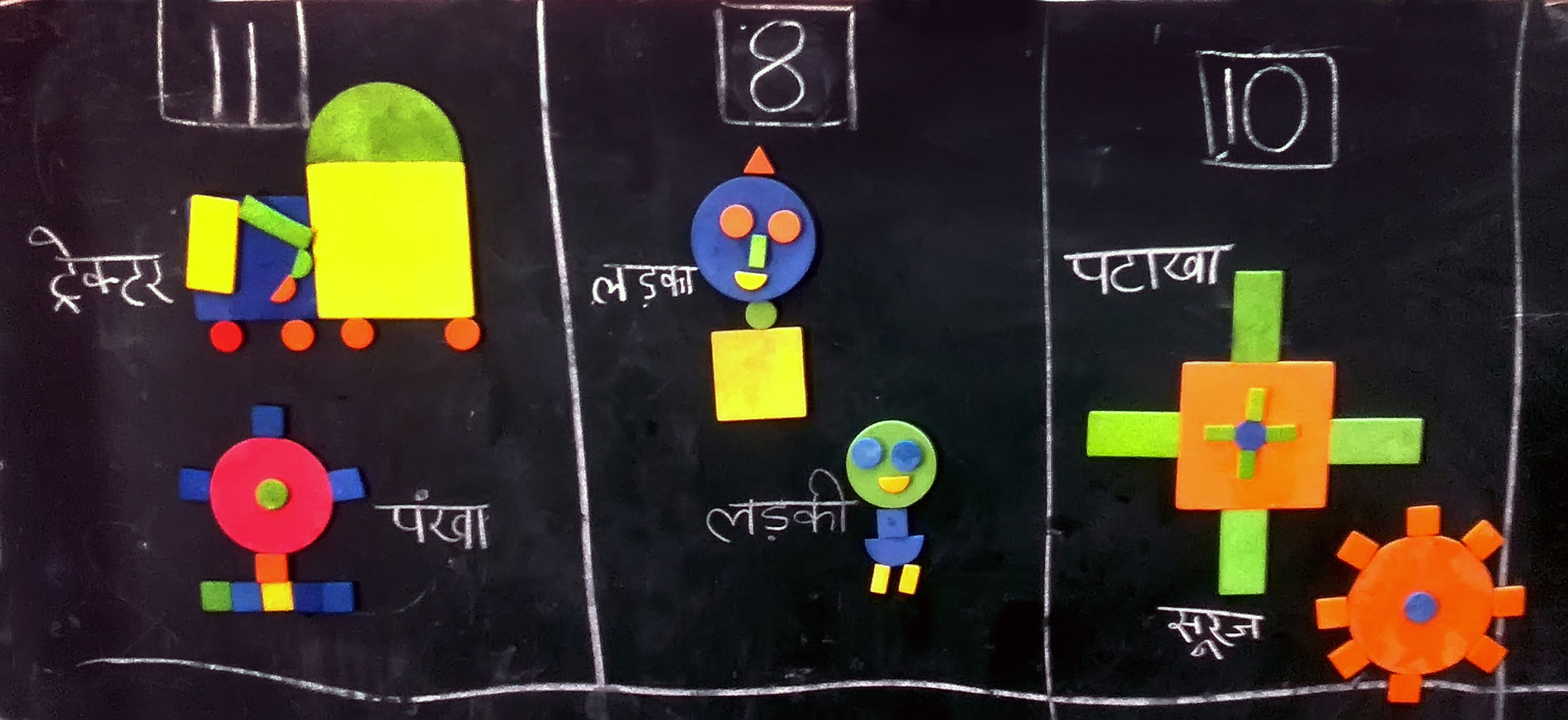
Thus for example, a fraction cutout is a piece of cake for the child to begin with. But she is able to reason out using it that 2 pieces of 1/8 are equal to 1/4. Later slowly the meaning of unit and non-unit fractions are developed.
The patterns produced by a child with Rangometry provide the teacher the background to have a conversation with the children about the relationships between the different polygons.
The color coding of the Ganitmala provides a powerful basis for the journey to the heights of place value.
What we have developed is a set of kits to support this process across the pre-primary and primary grades and these have been tried out in the classrooms over the years. These kits also include detailed manuals about the different activities and games that can be conducted.
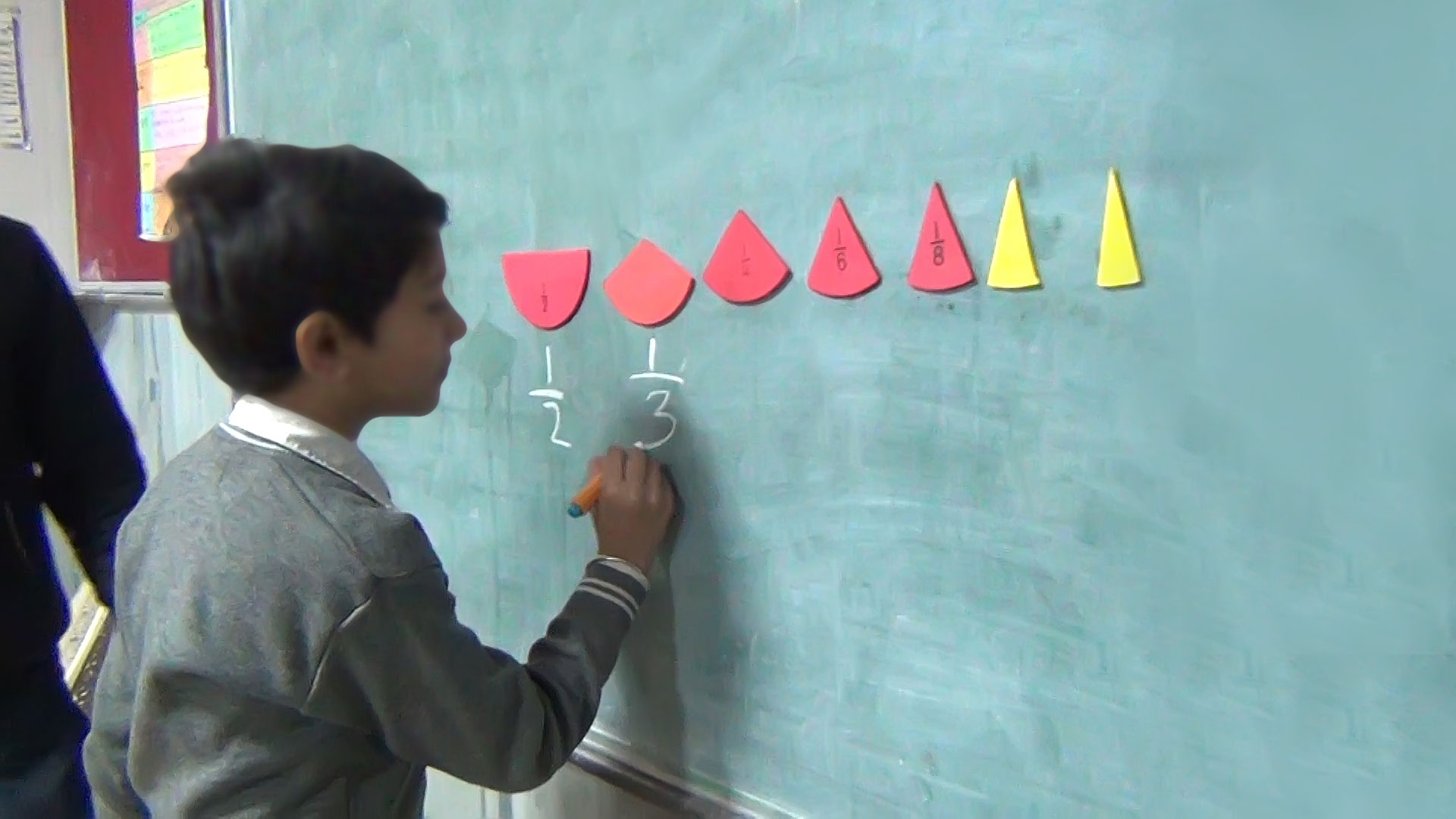
Mathematical concepts are learnt in a process of communication between teachers and children, whose understandings are very different. TLMs help develop a common medium of communication, a lingua franca, so to say. The same piece of rubber means a piece of cake to the child and a representation of a fraction to the teacher. But slowly through activities mediated by that lowly piece of rubber, emerges a conceptual understanding reflecting thousands of years of human thought and activity.

